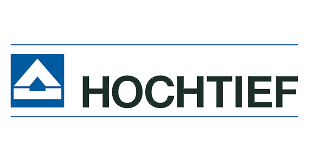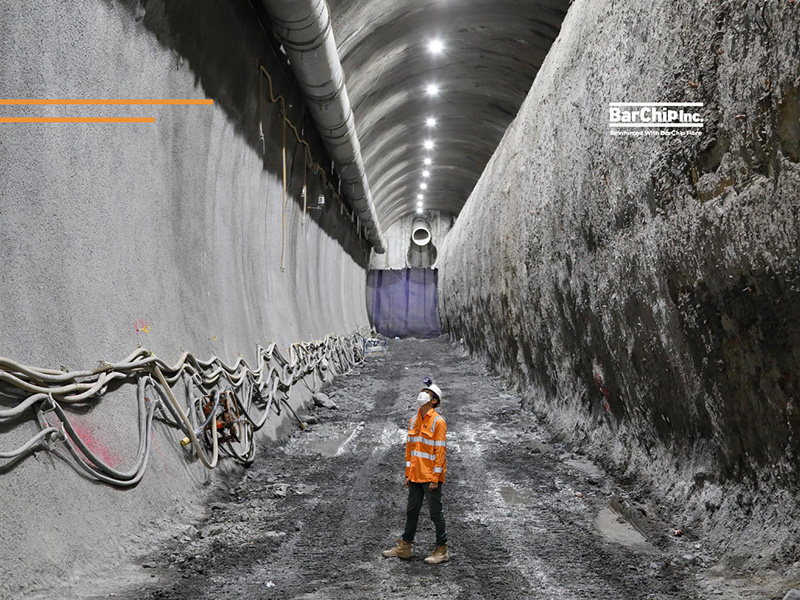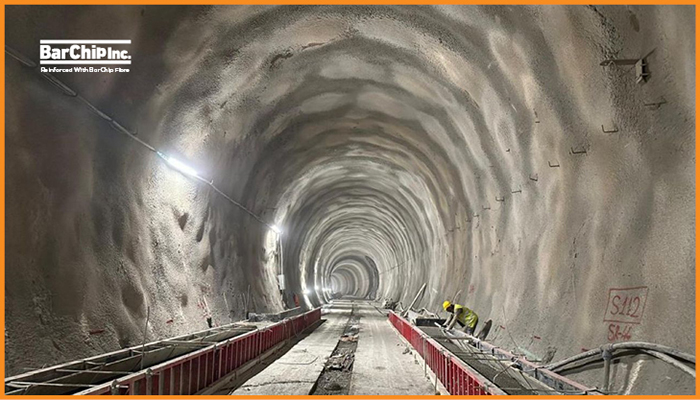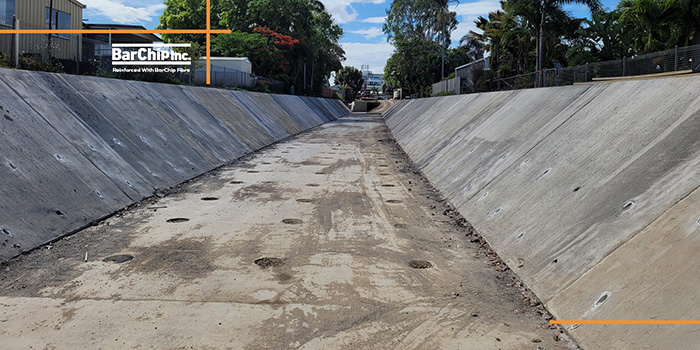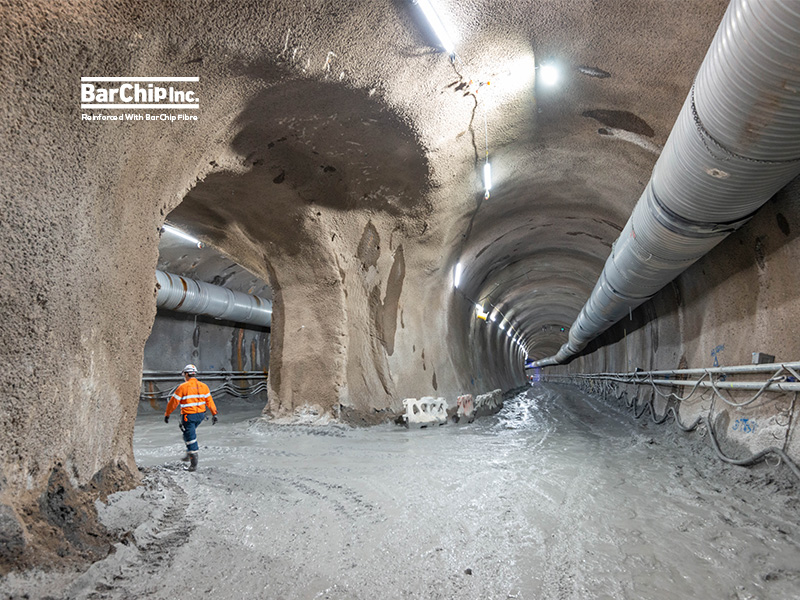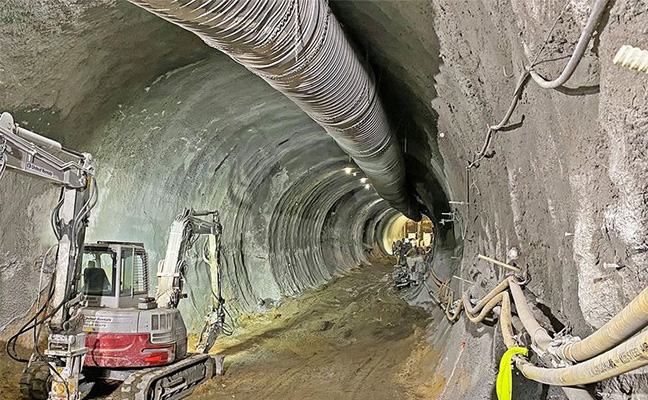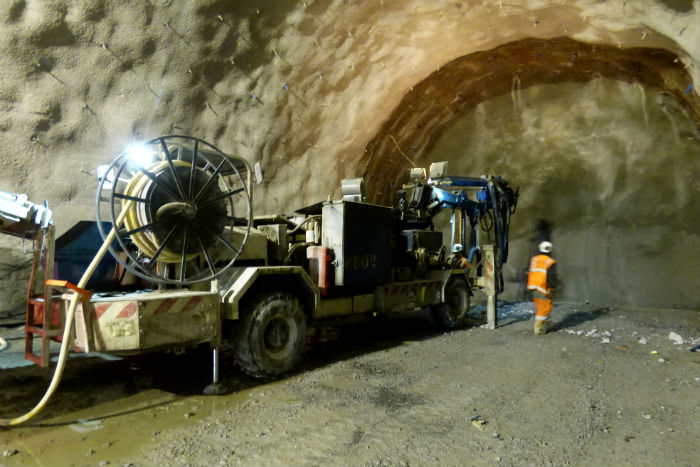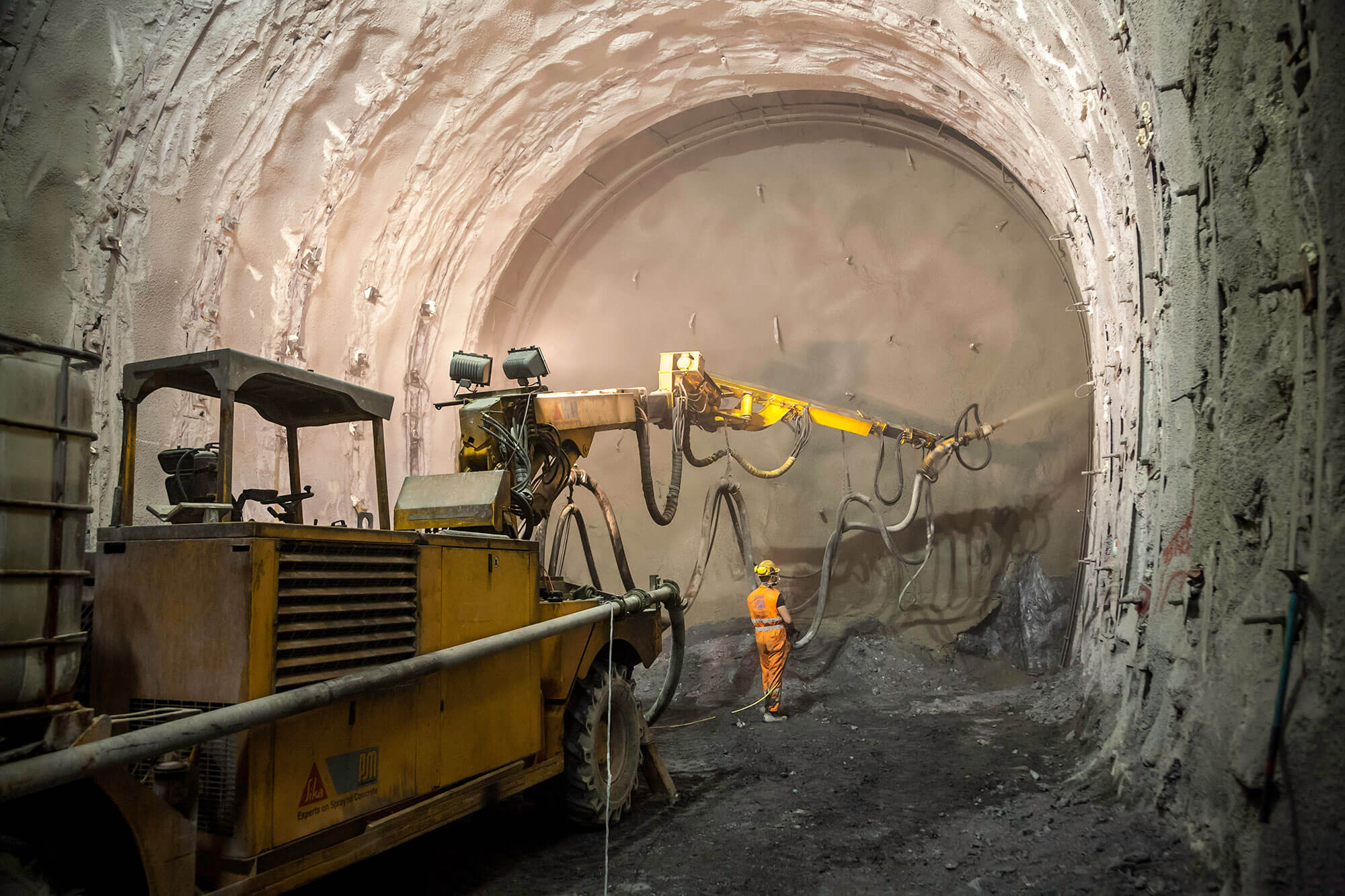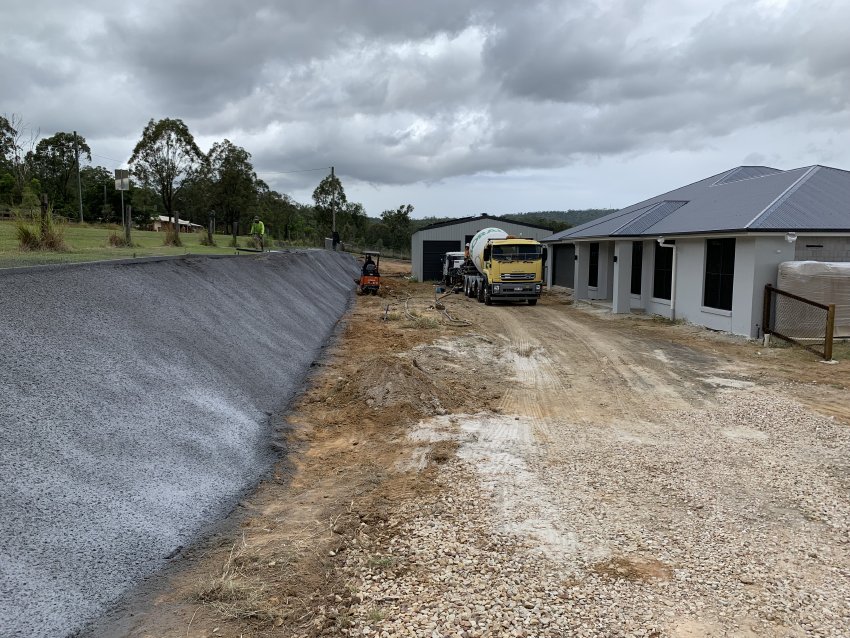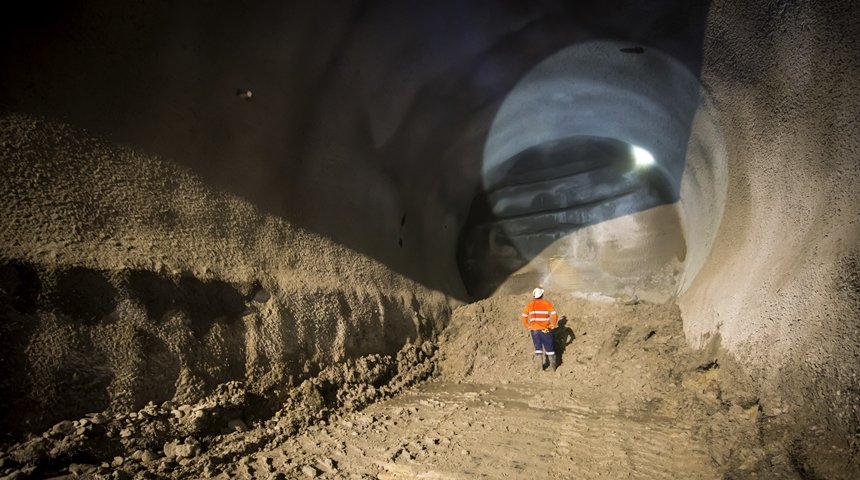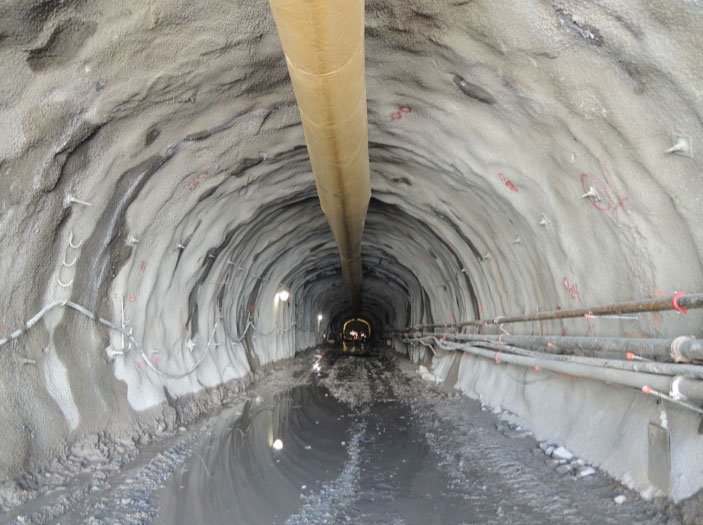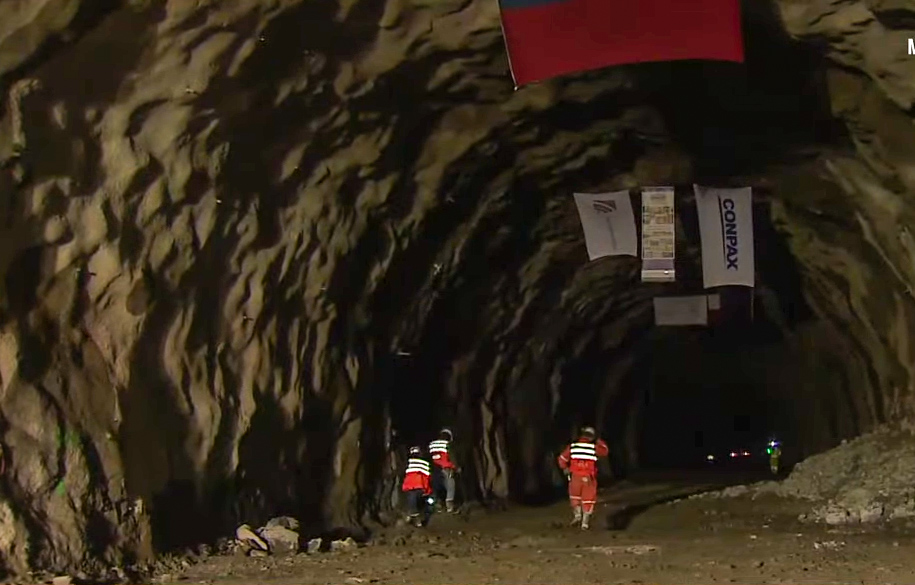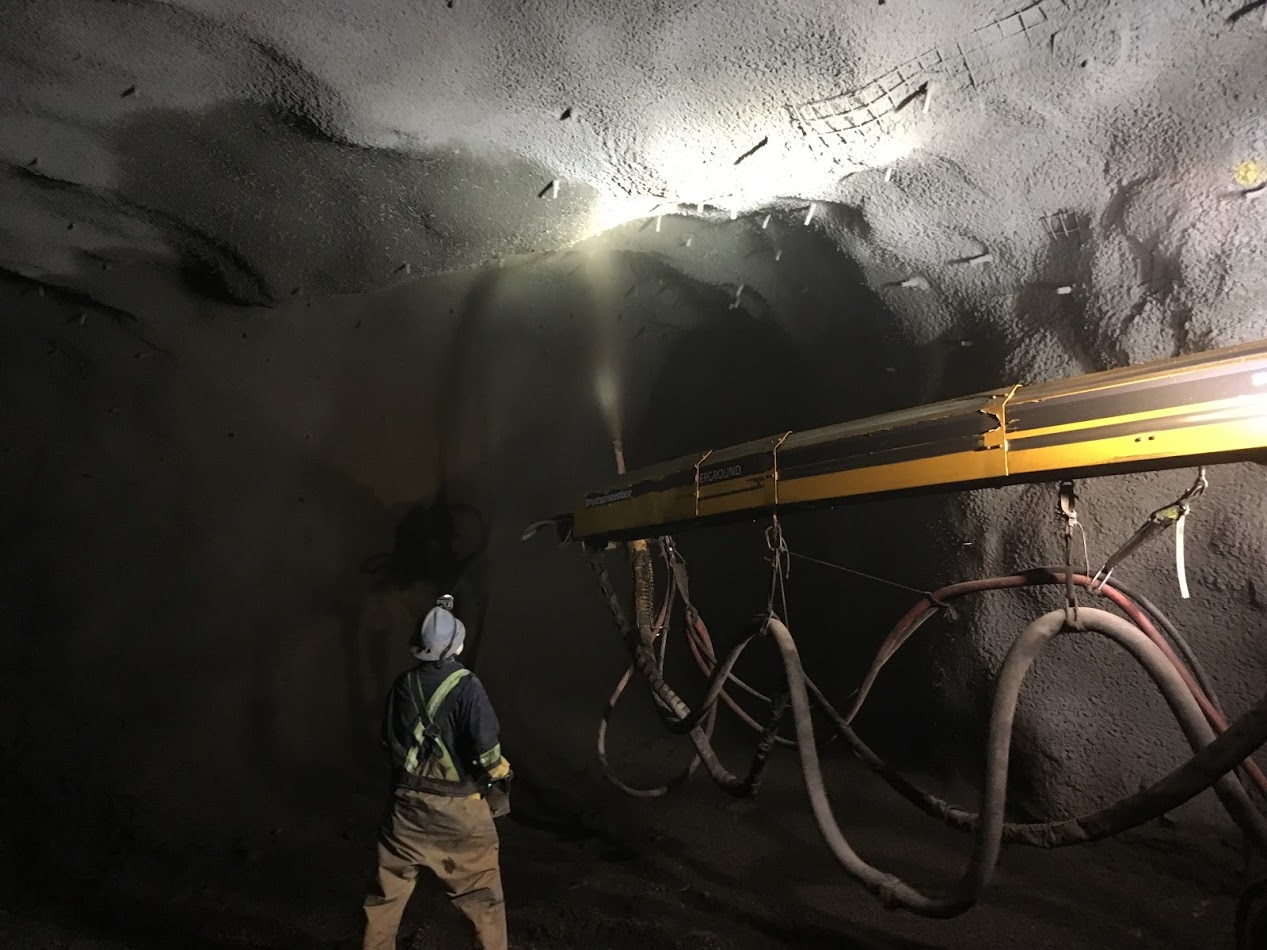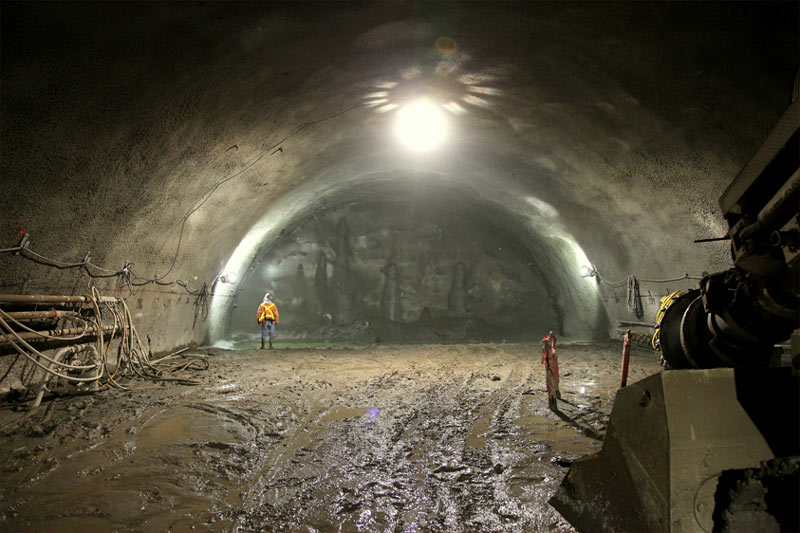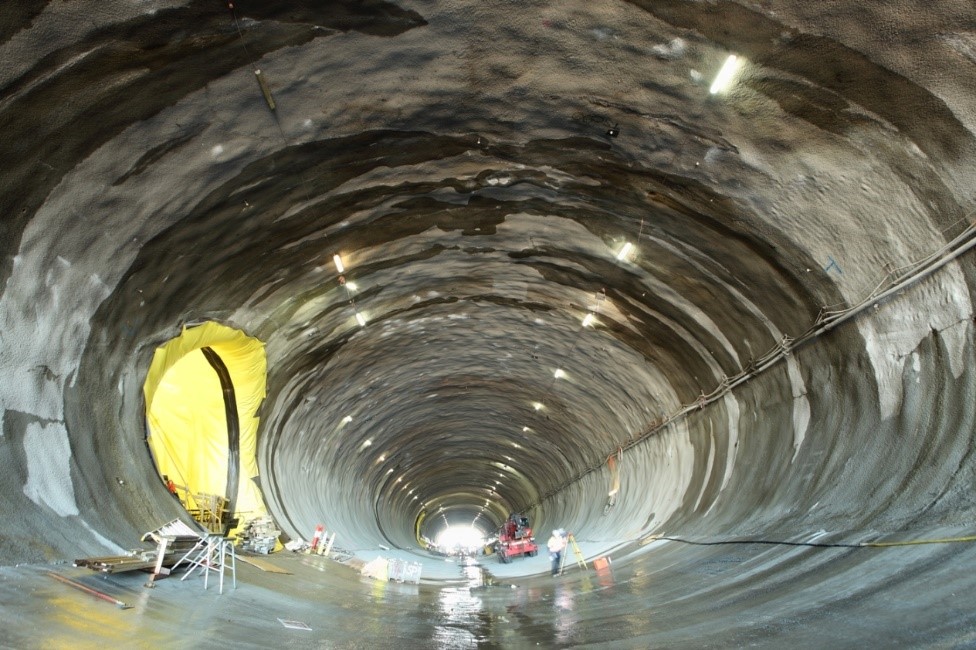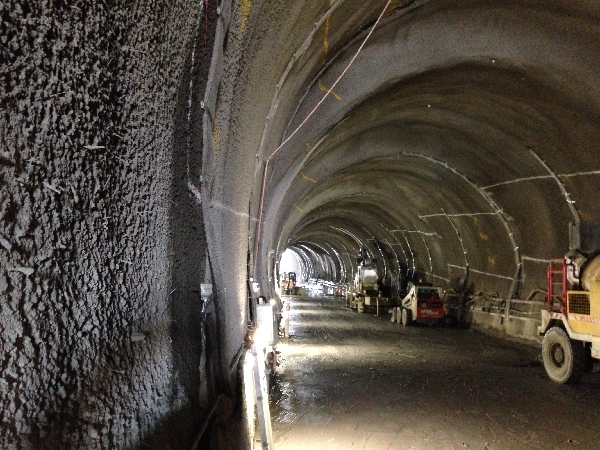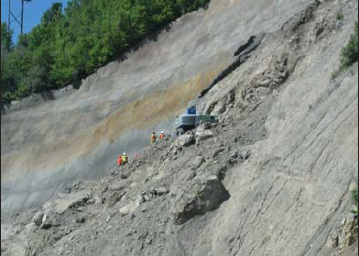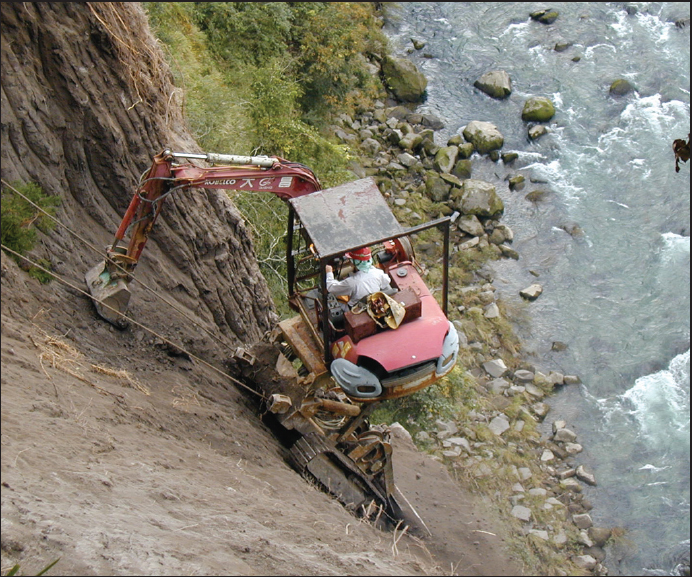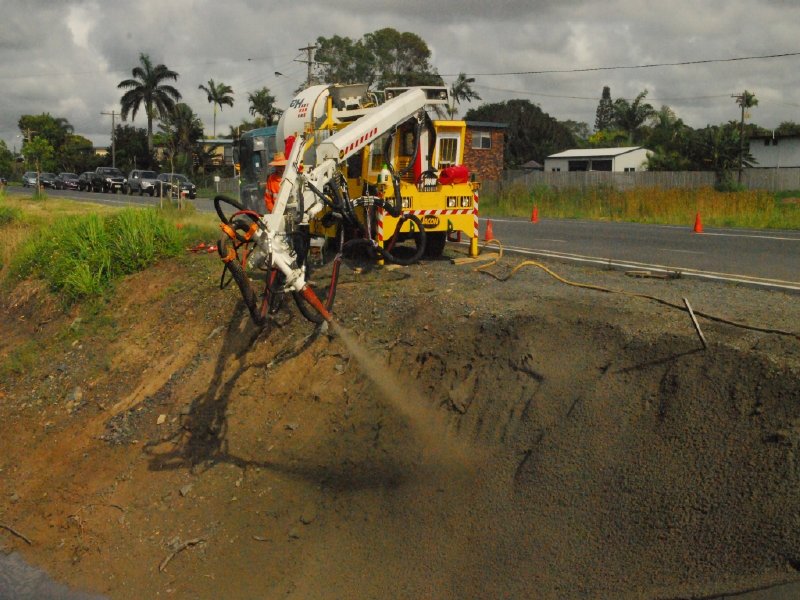Fibre Reinforced Shotcrete – Low Cost, Low Carbon, High Performance.
We make high performance fibres for shotcrete.

What is Shotcrete?
Shotcrete, also known as sprayed concrete, is a specially designed concrete mix that is sprayed onto surfaces at high velocity, allowing for rapid and precise application. Shotcrete has transformed construction in demanding conditions, delivering improvements in safety, efficiency and performance.
Fibre reinforced shotcrete takes this process even further. Adding BarChip fibre to shotcrete enhances toughness and ductility, prevents corrosion, accelerates construction speeds, boosts durability, reduces maintenance costs and lowers carbon footprint. These benefits make BarChip an ideal solution for all shotcrete applications.
BarChip Fibre
The World’s #1 Fibre for Shotcrete
BarChip fibre is globally recognised as the leading choice for high-performance shotcrete applications, trusted by engineers and contractors worldwide. Comparative testing of over 20 different fibres has shown that BarChip delivers unmatched toughness in panel testing, setting it apart in the market. With proven performance, BarChip fibre is the #1 fibre for shotcrete applications across all sectors, including mining, tunnelling, public works and residential projects.
BarChip fibre reinforced shotcrete is supporting more than 450 road, rail, and utility tunnels, and thousands of kilometres of underground mining excavations.
Low Cost. Low Carbon.
High Performance.
Ready to Talk?
Our promise is simple: BarChip fibre will improve your shotcrete durability, lower carbon footprint and reduce construction times compared with traditional steel alternatives.
Let’s talk and find out what we can do for you.
Where is Shotcrete Used?
Shotcrete is essential in construction and engineering for its versatility and durability. Widely used in most construction sectors, it provides structural support, stabilises terrain and extends the life of critical infrastructure. Its adaptability to diverse settings makes shotcrete a valuable solution across many industries.
Tunnelling and Underground Construction
Provides ground support as linings in civil and mining tunnels, and underground spaces like car parks, basements and storage facilities.
Slope Stabilization
Used on steep surfaces like rock faces and embankments to prevent erosion and stabilize slopes.
Repair and Rehabilitation
Ideal for repairing damaged concrete structures (e.g., bridges, retaining walls, and dams) due to its excellent bonding properties and ability to restore structural integrity.
Marine and Coastal Structures
Applied to seawalls, jetties, and marine structures requiring resistance to saltwater, wave action and harsh environments.
Architectural and Sculptural Applications
Used to create complex shapes, artificial rock formations and sculptures, offering adaptability and a high-quality finish.
Agricultural and Water Retention Structures
Used for water tanks, irrigation channels and other agricultural structures, emphasizing durability, versatility in application and leak prevention.
Residential Construction
Ideal for residential projects like slope stabilisation, retaining walls, underpinning, basements, swimming pools and landscaping. Shotcrete solutions provide a low cost, easy to apply alternative to traditional residential products.
Who Uses Fibre Reinforced Shotcrete?
BarChip users are a who’s who of global engineering, design and construction firms. With proven performance in all conditions, BarChip has become the preferred choice for major infrastructure projects.
Recognised by Environmental
Product Declarations (EPDs)
BarChip’s environmental performance is independently verified through the international Environmental Product Declaration (EPD) system, ensuring transparency and credibility when reviewing the sustainability of BarChip in shotcrete construction. Our EPDs are recognised in the world’s most common certification schemes, including Green Star, LEED and ISCA ratings.

Get Fibre Concrete Designs in Minutes
Using custom built tools based on ACI 544 and TR34 design methods, you can quickly determine the feasibility of BarChip fibre in your project. BarChip’s free to use design app is fast, simple to use and lets you generate reports straight from the app in just minutes. Suitable for flooring, paving and shotcrete applications.
Frequently Asked Questions
What is Shotcrete?
Shotcrete, also referred to as sprayed concrete or gunite, is a specialised concrete mix pneumatically applied at high pressure to a surface or substrate, either by hand spray or mechanised application.
Where is shotcrete used?
Shotcrete is most commonly used as ground support in underground excavations as a temporary or permanent tunnel lining, and as slope stabilisation works for cuttings, highwalls and culverts.
What’s the difference between shotcrete and regular concrete?
Shotcrete contains a mix of aggregates that allow it to be pumped and sprayed at high velocity and typically includes the addition of accelerator to achieve high compressive strengths much faster than normal concrete mixes.
What is the main benefit of macro synthetic fibre reinforced shotcrete?
BarChip fibre is corrosion free and eliminates numerous durability issues related to steel fibre reinforced shotcrete, especially in the harsh environments where shotcrete is most commonly used.
Does fibre reinforcement lower the carbon footprint of shotcrete?
BarChip fibres do not directly lower the carbon footprint of shotcrete, but they do enable sustainable construction practices, such as lower shotcrete consumption, faster construction, longer service life and reduced carbon compared to steel.
Can macro synthetic fibres reduce the amount of shotcrete used on a project?
Yes. Fibre reinforced shotcrete follows the natural ground profile and eliminates overspray normally required to fill voids behind steel mesh. BarChip fibres are corrosion free and allow for load sharing designs that can reduce overall lining thickness, and where waterproof membranes are used, BarChip eliminates the need for a smoothing layer.
Can fibres be used in permanent sprayed concrete linings?
Yes. Sprayed Concrete Linings (SCL) are an efficient design that reduces the overall cost and material consumption of a project. Because BarChip fibres are corrosion free, they can be relied upon to perform across the entire service life of the tunnel lining.
How do you design fibre reinforced shotcrete?
Fibre reinforced shotcrete is designed using a performance based approach, guided by international standards and rock mass classification systems such as the Barton Q-system. The fibre type and dosage are selected based on project requirements and validated through beam or panel testing to confirm residual strength or energy absorption capacity. The mix design is also optimised to ensure pumpability, good fibre dispersion, and consistent application in the field.
Get in touch for a personal information session about your next project. One of our concrete fibre experts will guide you through the following 4 keys items:





















